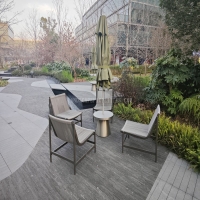Welcome to the website for landscape facilities products and knowledge.
How does the bin’s design prevent overflow or overfilling, especially in high-traffic areas?
In high-traffic areas, overflowing bins are a common nuisance, leading to litter and unsanitary conditions. Modern bin designs tackle this issue through innovative features that ensure efficient waste containment.
1. Capacity Sensors: Many smart bins are equipped with sensors that monitor fill levels in real time. When the bin reaches near-capacity, it alerts waste management teams for timely collection, preventing overflow.
2. Compaction Technology: Some advanced bins use compactors to compress trash, significantly increasing their effective capacity. This allows them to hold more waste without requiring frequent emptying.
3. Sloped or Narrow Openings: Bins designed with smaller or angled openings discourage overfilling by making it difficult to stuff in excess waste. This subtle design choice promotes proper disposal habits.
4. Ventilation and Drainage: In outdoor settings, bins with proper ventilation and drainage prevent liquid buildup and odor, reducing the risk of messy spills even when full.
5. Modular and Stackable Designs: In crowded spaces, modular bins can be easily expanded or linked to handle peak waste loads, ensuring no single bin becomes overwhelmed.
By integrating these features, modern bins effectively combat overflow, maintaining cleanliness and hygiene in busy environments. Cities and businesses adopting such designs see fewer litter-related issues and improved waste management efficiency.
Related search:

Recommendation
Metal structure rattan chair without armrests for single person, with woven seat and backrest.